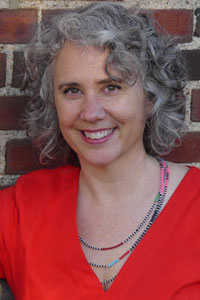SIUE's Robb Launches New Book, “Group Art Therapy: Practice and Research”
Posted May 2, 2022
 Megan Robb is a professor in the Department of Art and Design and the program director of the art therapy counseling graduate program at SIUE. She received her master's degree in art therapy from The George Washington University as well as training in relational cultural theory, motivational interviewing, and is constantly working towards anti-oppression in the classroom, teaching, service and scholarship.
Megan Robb is a professor in the Department of Art and Design and the program director of the art therapy counseling graduate program at SIUE. She received her master's degree in art therapy from The George Washington University as well as training in relational cultural theory, motivational interviewing, and is constantly working towards anti-oppression in the classroom, teaching, service and scholarship.
Robb is a board-certified art therapist, a nationally certified counselor, and is licensed in Missouri and the District of Columbia. Throughout her career, she has worked in a variety of settings, including psychiatric hospitals; special education placements; and mental hospitals, including the National Institutes of Health Clinical Center. She teaches research methodology and research projects, group art therapy and practicum courses, and her research interests include art-based supervision, shame and culturally competent practice, medical art therapy, and group art therapy.
Tell us about the book.
“Group Art Therapy: Practice and Research” is the first survey textbook that provides the basics of using art as a means of healing for groups. This textbook is designed for graduate students, art therapists new to group therapy, or supervisors who are learning how to lead group therapy. Other group art therapy books only provide one person or one theoretical approach, which is not helpful to the new learner.
What is the key theme and/or message in the book?
The theme explored in this book is that groups are a natural way of interacting and knowing oneself and an efficient way of receiving therapy.
What inspired the idea for your book?
My students play a huge role in my inspiration for this book, especially teaching group art therapy (a required course in training – therefore there was a need for this textbook).
What is the most surprising thing you discovered while writing your book?
It was surprising for me to discover a variety of approaches to art therapy that is beyond western psychology practices.
What perspectives or beliefs have you challenged with this work?
With this book, I focused on highlighting the work of Black and brown art therapists and also addressed social justice approaches.
What part of the book was the most difficult and the most fun to write?
The writing and editing itself was the most difficult, but I had fun reading all I could in groups and linking various ideas.
What do you hope your readers take away from this book?
I hope they can connect with the theme of structure and approach to groups that fits each reader.
The book can be purchased on Amazon, and readers can find out more about the author and the book on www.meganrobbatrbc.com.











